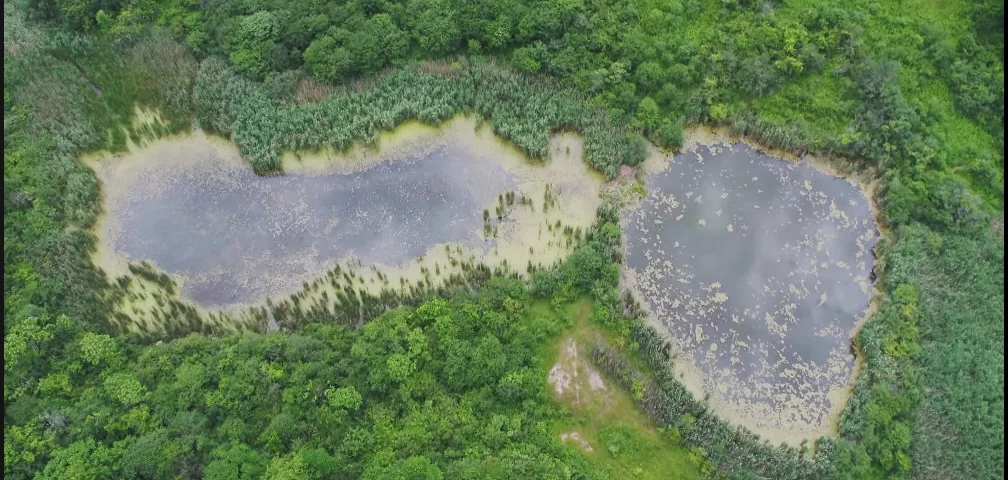by Last Real Indians, published on Popular Resistance, July 7, 2022
Unprecedented Land Back Moment.
The Onondaga Nation will recover more than 1,000 acres of forest lands in the Tully Valley through an historic agreement with New York State and the federal government. This property, identified for restoration and preservation as part of the Onondaga Lake Natural Resource Damages and Restoration process, will now be returned to the care of the Onondaga Nation.
“It is with great joy that the Onondaga Nation welcomes the return of the first substantial acreage of its ancestral homelands. The Nation can now renew its stewardship obligations to restore these lands and waters and to preserve them for the future generations yet to come. The Nation hopes that this cooperative, government-to-government effort will be another step in healing between themselves and all others who live in this region which has been the homeland of the Onondaga Nation since the dawn of time,”
says Tadodaho Sid Hill.
Re-establishing Onondaga Nation stewardship over these lands, which include the headwaters of Onondaga Creek, is a ground-breaking opportunity to restore the land, preserve Onondaga culture, and address historic and ongoing land injustices. The benefits of this decision will accrue not only to the local ecosystem and the Onondaga Nation citizens as they reconnect with their ancestral lands, but to state and federal agencies and the general public, as they learn from cross-cultural consultation, collaboration, and educational opportunities. The Nation is deeply committed to healing and restoring this property, which has been profoundly damaged by decades of reckless brine mining by Honeywell.
For the Onondaga people, Onondaga Lake and Onondaga Creek are sacred. They are considered living relatives, central to the Onondaga worldview and spirituality. These waterways and other natural areas, like the Tully Valley lands, provide freely-given and sustainable connections with traditional foods and medicine, support ancestral memory and cultural life ways, and remind the Nation of their cultural and ecological responsibilities to their non-human relatives.
“The Onondaga people have a unique spiritual, cultural and historic relationship with the land, which is embodied in the Gaya•neñ•hsä•’gó•nah – the Great Law of Peace. This relationship goes far beyond U.S. federal and state legal concepts of ownership, possession, or legal rights. The people are relations with the land, and consider themselves the land’s caretakers,”
says Joe Heath, legal counsel to the Onondaga Nation.
“It is the duty of the Nation’s leaders to work for a healing of this land, to protect it, and to pass it on to future generations, while operating under an unwavering emphasis on restorative healing for communities. “
According to SUNY-ESF Center for Native Peoples and the Environment, the return of the Tully land to the Onondaga Nation provides unique public benefits. This action furthers the State of New York’s obligations under its own environmental justice policy and the United Nations Declaration on the Rights of Indigenous Peoples. The Tully Valley lands will provide opportunities to restore important Onondaga cultural practices, such as fishing, hunting, and gathering plants. It begins to redress the unjust dispossession of the Onondaga Nation from their ancestral lands and the years of industrial abuse of Onondaga Lake, which previously provided a culturally important and resource-rich site for fishing, hunting, and gathering and is now too contaminated to offer these services.
The public will also benefit from the responsibility-focused stewardship practices of the Onondaga Nation. Numerous scientific studies have established that Indigenous land management practices protect biodiversity and healthy forests, preserve clean soils and waters, and better prepare communities for climate resiliency and adaptation. Across the planet, there is a significant overlap between “biodiversity hot spots” and Indigenous-held lands with Indigenous peoples caring for 80% of the world’s biodiversity on less than half the land area. Indigenous-managed forests have higher levels of understory plants, more natives and fewer invasive species, and more mature forest characteristics than comparable forests managed by non-Native public agencies. Considering this successful global record of conservation, restoring Onondaga-led decisions supports the DEC’s conservation mission.
The Nation appreciates the cooperation of its treaty partner, the United States, and of New York State, as these two Trustees for Natural Resource Damages have listened to Onondaga, understood the damages suffered by the Nation and its citizens from the industrial pollution of their sacred lake–Onondaga Lake, and work to respect the Nation’s deep ties to these lands and the traditional ecological knowledge which will lead future restoration of these acres. The Nation applauds the Trustees’ decision to join the growing movement to restore Indigenous people to their ancestral lands and to partner with Indigenous people to restore traditional land stewardship methods.
The Nation’s oral history shows that they have been present on this land for thousands of years, They were witness to and stewards of an historical abundance of resources, including eels, whitefish, bears, native plants, and old-growth forest, and to the destruction and contamination of those resources by generations of industrial abuse, dumping of wastes, filling of wetlands, and shoreline development. The Nation has a vision for their ancestral lands, rooted in the quality and purity of water and the respectful tending of land, wildlife, and other non-human relatives. The return of the Tully property to Nation stewardship is a good initial action in this long journey.
The Nation looks forward to further cooperative efforts to protect more land and waters by restoring Nation stewardship. Let us continue to work together to heal some of the harms of the past–the illegal takings of Onondaga homelands and the century of industrial pollution to the land and water. Water is life.
* Featured Image: Credit- CNY Central
